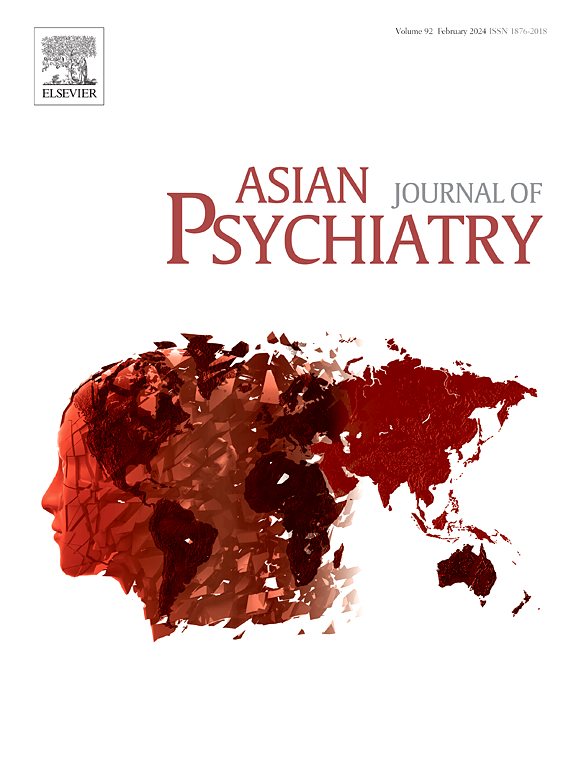Long-acting injectable antipsychotics in the treatment of schizoaffective disorder: A retrospective mirror image study for hospitalizations and treatment costs
IF 4.5
4区 医学
Q1 PSYCHIATRY
引用次数: 0
Abstract
This study investigates the effect of long-acting injectable antipsychotic (LAI) use on psychiatric hospitalizations and treatment costs in schizoaffective disorder. In our retrospective, naturalistic mirror image study, we evaluated the medical records of patients attending to the community mental health centers affiliated to our hospital with the diagnosis of schizoaffective disorder during last 5 years. Comparisons were made for 43 patients using LAI treatment regarding hospitalizations and treatment costs for the one-year period before and after initiation of LAI with additional comparisons according to the class of LAI. The number and length of hospitalizations were lower after LAI treatment and the cost of drug treatment was higher but the cost of hospitalization was lower compared to the previous year. The cost of medication and total treatment costs in the first year of treatment was higher for patients using second-generation LAI than patients using first-generation LAI. After the initiation of LAI treatment, for the first-generation LAI group; there was no significant difference between the medication costs, but hospitalization costs and total treatment costs were lower and for the second-generation LAI group; the cost of medications was higher, the cost of hospitalizations was lower and the total cost of treatment was higher. Although the overall treatment cost rises due to the high prices of second-generation LAIs relative to hospitalization costs in our country, the reduction in hospitalizations associated with both groups of LAI in schizoaffective disorder is an outstanding outcome that is important for both patients and the community.
长效注射抗精神病药物治疗分裂情感性障碍:住院和治疗费用的回顾性镜像研究
本研究探讨长效注射抗精神病药(LAI)对精神分裂症情感障碍患者住院率和治疗费用的影响。在我们的回顾性、自然镜像研究中,我们评估了在我院附属社区精神卫生中心就诊的诊断为精神分裂情感障碍的患者近5年的医疗记录。比较了43例采用LAI治疗的患者在LAI开始前后一年的住院和治疗费用,并根据LAI的类别进行了额外的比较。LAI治疗后住院次数和住院时间较前一年减少,药物治疗费用较高,但住院费用较前一年降低。第二代LAI患者治疗第一年的药物费用和总治疗费用高于第一代LAI患者。开始LAI治疗后,为第一代LAI组;两组间药物费用差异无统计学意义,但住院费用和总治疗费用较低;药物费用较高,住院费用较低,治疗总费用较高。虽然在我国,由于第二代LAI的价格相对于住院费用较高,导致总体治疗费用上升,但两组LAI在精神分裂情感障碍中的住院率降低是一个突出的结果,对患者和社区都很重要。
本文章由计算机程序翻译,如有差异,请以英文原文为准。
求助全文
约1分钟内获得全文
求助全文
来源期刊

Asian journal of psychiatry
Medicine-Psychiatry and Mental Health
CiteScore
12.70
自引率
5.30%
发文量
297
审稿时长
35 days
期刊介绍:
The Asian Journal of Psychiatry serves as a comprehensive resource for psychiatrists, mental health clinicians, neurologists, physicians, mental health students, and policymakers. Its goal is to facilitate the exchange of research findings and clinical practices between Asia and the global community. The journal focuses on psychiatric research relevant to Asia, covering preclinical, clinical, service system, and policy development topics. It also highlights the socio-cultural diversity of the region in relation to mental health.
 求助内容:
求助内容: 应助结果提醒方式:
应助结果提醒方式:


